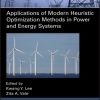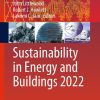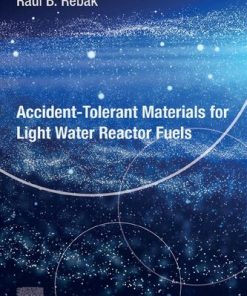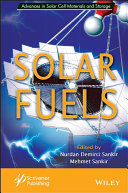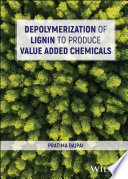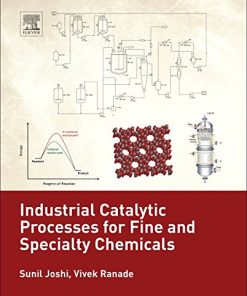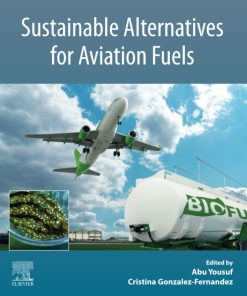Converting Power into Chemicals and Fuels 1st edition by Martin Bajus 1394185766 9781394185764
$50.00 Original price was: $50.00.$25.00Current price is: $25.00.
Converting Power into Chemicals and Fuels 1st edition by Martin Bajus – Ebook PDF Instant Download/DeliveryISBN: 1394185766, 9781394185764
Full download Converting Power into Chemicals and Fuels 1st edition after payment.
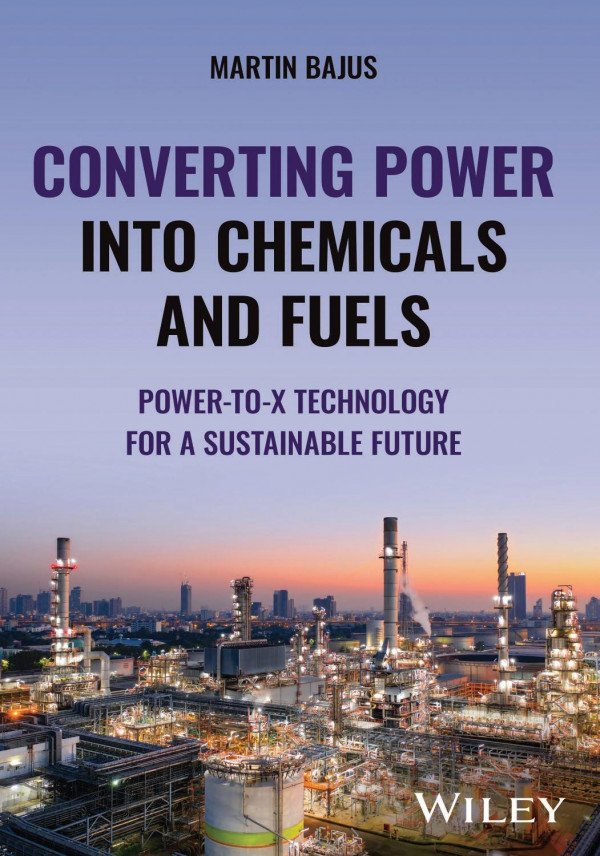
Product details:
ISBN-10 : 1394185766
ISBN-13 : 9781394185764
Author : Martin Bajus
Power into Chemicals and Fuels stresses the versatility of hydrogen as an enabler of the renewable energy system, an energy vector that can be transported and stored, and a fuel for the transportation sector, heating of buildings and providing heat and feedstock to industry. It can reduce both carbon and local emissions, increase energy security and strengthen the economy, as well as support the deployment of renewable power generation such as wind, solar, nuclear and hydro.
With a focus on power-to-X technologies, this book discusses the production of basic petrochemicals in such a way as to minimize the carbon footprint and develop procedures that save energy or use energy from renewable sources. Various different power-to-X system configurations are introduced with discussions on their performance, environmental impact, and cost. Technologies for sustainable hydrogen production are covered, focusing on water electrolysis using renewable energy as well as consideration of the remaining challenges for large scale production and integration with other technologies.
Converting Power into Chemicals and Fuels 1st Table of contents:
1 Power-to-Chemical Technology
1.1 Introduction
1.2 Power-to-Chemical Engineering
1.2.1 Carbon Dioxide Thermodynamics
1.2.2 Carbon Dioxide Aromatization Thermodynamics
1.2.3 Reaction Mechanism of Carbon Dioxide Methanation
1.2.4 Water Electrolysis Thermodynamics
1.2.5 Methane Pyrolysis Reaction Thermodynamic Consideration
1.2.5.1 The Carbon-Hydrogen System
1.2.6 Reaction Kinetics and Mechanism
1.2.7 Thermal Mechanism of Methane Pyrolysis into a Sustainable Hydrogen
1.2.8 Catalytic Mechanism Splitting of Methane into a Sustainable Hydrogen
1.2.9 Conversion of Methane over Metal Catalysts into a Sustainable Hydrogen
1.2.9.1 Nickel Catalysts
1.2.9.2 Iron Catalysts
1.2.9.3 Regeneration of Metal Catalysts
1.2.10 Conversion of Methane over Carbon Catalysts into Clean Hydrogen
1.2.10.1 Activity of Carbon Catalysts
1.2.10.2 Stability and Deactivation of Carbon Catalysts
1.2.10.3 Regeneration of Carbon Catalysts
1.2.10.4 Co-Feeding to Extend the Lifetime of Carbon Catalysts
1.2.11 Reactors
1.2.11.1 Conversion, Selectivity and Yields
1.2.11.2 Modelling Approach of the Structured Catalytic Reactors
1.2.11.3 Reactor Concept for Catalytic Carbon Dioxide Methanation
1.2.11.4 Monolithic Reactors
1.2.11.5 Mass Transfer in the Honeycomb and Slurry Bubble Column Reactor
1.2.11.6 Heat Transfer in Honeycomb and Slurry Bubble Column Reactors
1.2.11.7 Process Design
1.2.11.8 Comparison and Outlook
1.3 Potential Steps Towards Sustainable Hydrocarbon Technology: Vision and Trends
1.3.1 Technology Readiness Levels
1.3.2 A Vision for the Oil Refinery of 2030
1.3.3 The Transition from Fuels to Chemicals
1.3.3.1 Crude Oil to Chemicals Investments
1.3.3.2 Available Crude-to-Chemicals Routes
1.3.4 Business Trends: Petrochemicals 2025
1.3.4.1 Asia-Pacific
1.3.4.2 Middle East
1.3.4.3 United States
1.4 Digital Transformation
1.4.1 Benefits of Digital Transformation
1.4.2 A New Workforce and Workplace
1.4.3 Technology Investment
1.4.4 The Greening of the Downstream Industry
1.4.4.1 Sustainable Alkylation Technology
1.4.4.2 Ecofriendly Catalyst
1.5 RAM Modelling
1.5.1 RAM1 Site Model
1.5.2 RAM2 Plant Models
1.5.3 RAM3 Models
1.5.4 RAM Modelling Benefit
1.6 Conclusions
Further Reading
2 The Green Shift in Power-to-Chemical Technology and Power-to-Chemical Engineering: A Framework for a Sustainable Future
2.1 Introduction
2.2 Eco-Friendly Catalyst
2.2.1 Development of Catalysts Supported on Carbons for Carbon Dioxide Hydrogenation
2.2.2 Properties of Carbon Supports
2.3 Hydrogen
2.3.1 Different Colours and Costs of Hydrogen
2.3.1.1 Blue Hydrogen
2.3.1.2 Green Hydrogen
2.3.1.3 Grey Hydrogen
2.3.1.4 Pink Hydrogen
2.3.1.5 Yellow Hydrogen
2.3.1.6 Multi-Coloured Hydrogen
2.3.1.7 Hydrogen Cost
2.4 Alternative Feedstocks
2.4.1 Carbon Dioxide-Derived Chemicals
2.5 Alternative Power-to-X-Technology
2.5.1 Power-to-X-Technology to Produce Electrochemicals and Electrofuels
2.6 Partial Oxidation of Methane
2.7 Biorefining
2.8 Sustainable Production to Advance the Circular Economy
2.8.1 Introduction
2.8.2 Circular Economy
2.8.2.1 Sustainability
2.8.2.2 Scope
2.8.2.3 Background of the Circular Economy
2.8.2.3.1 Emergence of the Idea
2.8.2.3.2 Moving Away from the Linear Model
2.8.2.3.3 Towards the Circular Economy
2.8.3 Circular Business Models
2.8.4 Industries Adopting a Circular Economy
2.8.4.1 Minimizing Dependence on Fossil Fuels
2.8.4.2 Minimizing the Impact of Chemical Synthesis and Manufacturing
2.8.4.3 Future Research Needs in Developing a Circular Economy
2.9 New Chemical Technologies
2.9.1 Renewable Power
Further Reading
3 Storage Renewable Power-to-Chemicals
3.1 Introduction
3.2 Terminology
3.3 Energy Storage Systems
3.4 World Primary Energy Consumption
3.4.1 2019 Briefly
3.4.2 Energy in 2020
3.4.2.1 Not Just Green but Greening
3.4.2.2 For Energy, 2020 Was a Year Like No Other
3.4.2.3 Glasgow Climate Pact
3.4.2.4 Energy in 2020: What Happened and How Surprising Was It
3.4.2.5 How Should We Think About These Reductions
3.4.2.6 What Can We Learn from the COVID-induced Stress Test
3.4.2.7 Progress Since Paris – How Is the World Doing
3.5 Carbon Dioxide Emissions
3.5.1 Carbon Footprint
3.5.1.1 Climate-driven Warming
3.5.2 Carbon Emissions in 2020
3.6 Clean Fuels ‒ the Advancement to Zero Sulfur
3.7 Renewables in 2019
3.8 Hydroelectricity and Nuclear Energy
3.9 Conclusion
Further Reading
4 Carbon Capture, Utilization and Storage Technologies
4.1 Industrial Sources of Carbon Dioxide
4.2 Carbon Capture, Utilization and Storage Technologies
4.3 Carbon Dioxide Capture
4.4 Developing and Deploying CCUS Technology in the Oil and Gas Industry
4.5 Sustainable Steel/Chemicals Production: Capturing the Carbon in the Material Value Chain
4.5.1 Valorisation of Steel Mill Gases
4.5.2 Summary and Outlook
Further Reading
5 Integrated Refinery Petrochemical Complexes Including Power-to-X Technologies
5.1 Introduction
5.2 Synergies Between Refining and Petrochemical Assets
5.2.1 Reaching Maximum Added Value – Integrated Refining Schemes
5.2.1.1 Fluid Catalytic Cracking Alternates
5.2.1.2 Hydrocracking Alternates
5.2.2 Comparisons and Sensitivities to Product/Utility Pricing
5.2.3 Options for Further Increasing the Petrochemical Value Chain
5.3 Carbon Dioxide Emissions
5.3.1 Effect of a Carbon Dioxide Tax
5.3.2 Crude Oil Effects
5.4 Summary
5.5 Power- to-X Technology
5.6 The Role of Nuclear Power
5.6.1 Small Nuclear Power Reactors
5.6.2 Conclusion
Further Reading
6 Power-to-Hydrogen Technology
6.1 Introduction
6.2 Traditional and Developing Technologies for Hydrogen Production
6.3 Dry Reforming of Methane
6.4 Tri-reforming of Methane
6.5 Greenfield Technology Option → Low Carbon Emission Routes
6.5.1 Water Electrolysis
6.5.1.1 Alkaline Electrolysis
6.5.1.2 Polymer Electrolyte Membrane Electrolysis
6.5.1.3 Solid Oxide Electrolysis
6.5.2 Methane Pyrolysis
6.5.2.1 Process Concepts for Industrial Application
6.5.2.2 Perspectives of the Carbon Coproduct
6.5.3 Thermochemical Processes
6.5.4 Photocatalytic Processes
6.5.5 Biomass Electro-Reforming
6.5.6 Microorganisms
6.5.7 Hydrogen from Other Industrial Processes
6.5.8 Hydrogen Production Cost
6.5.9 Electrolysers
6.5.10 Carbon Footprint
6.6 Advances in Chemical Carriers for Hydrogen
6.6.1 Demand Drivers
6.6.2 Options for Hydrogen Deployment
6.6.3 Advances in Hydrogen Storage/Transport Technology
6.6.4 Global Supply Chain
6.6.5 Power-to-Gas Demo
6.6.5.1 Hydrogen Fuelling Stations
6.6.5.2 Pathway to Commercialization
6.6.5.3 Transportation Studies in North America
6.6.6 Future Applications
6.7 Ammonia Fuel Cells
6.7.1 Proton-Conducting Fuel Cells
6.7.2 Polymer Electrolyte Membrane Fuel Cells
6.7.3 Proton-conducting Solid Oxide Fuel Cells
6.7.4 Alkaline Fuel Cells
6.7.5 Direct Ammonia Solid Oxide Fuel Cell
6.7.6 Equilibrium Potential and Efficiency of the Ammonia-Fed SOFC
6.8 Conclusions
Further Reading
7 Power-to-Fuels
7.1 Introduction
7.2 Selection of Fuel Candidates
7.2.1 Fuel Production Processes
7.3 Power-to-Methane Technology
7.3.1 Carbon Dioxide Electrochemical Reduction
7.3.2 Carbon Dioxide Hydrogenation
7.4 Power-to-Methanol
7.5 Power-to-Dimethyl Ether
7.6 Chemical Conversion Efficiency
7.6.1 Exergy
7.6.2 Exergy Efficiency
7.6.3 Economic and Environmental Evaluation
7.6.4 Fuel Assessment
7.6.5 Performance of Fuel Production Processes
7.6.6 Process Chain Evaluation
7.6.7 Fuel Cost
7.7 Well-to-Wheel Greenhouse Gas Emissions
7.7.1 Environmental Impact
7.7.2 Infrastructure
7.7.3 Efficiency
7.7.4 Energy/Power Density
7.7.5 Pollutant Emissions
7.8 Gasoline Electrofuels
7.9 Diesel Electrofuels
7.10 Electrofuels and/or Electrochemicals
7.10.1 Physico-Chemical Properties
7.10.1.1 Density
7.10.1.2 Tribological Properties
7.10.1.3 Combustion Characteristics
7.10.1.4 Combustion and Emissions
7.10.2 Diesel Engine Efficiency
7.10.3 Potential of Diesel Electrofuels
7.11 Maturity, TRL, Production and Electrolysis Costs
7.11.1 Summary
7.12 Power-to-Liquid Technology
7.12.1 Power-to-Jet Fuel
7.12.2 Power-to-Diesel
7.13 Conclusion and Outlook
Further Reading
8 Power-to-Light Alkenes
8.1 Oxidative Dehydrogenation
8.1.1 Carbon Dioxide as a Soft Oxidant for Catalytic Dehydrogenation
8.1.2 Carbon Dioxide: Oxidative Coupling of Methane
8.1.3 From Carbon Dioxide to Lower Olefins
8.1.4 Low-Carbon Production of Ethylene and Propylene
8.1.4.1 Energy Demand per Unit of Ethylene/Propylene Production via Methanol
8.1.4.2 Carbon Dioxide Reduction per Unit of Ethylene/Propylene Production
8.1.4.3 Economics of Low-Carbon Ethylene and Propylene Production
8.2 Life Cycle Assessment
8.2.1 Small-Scale Production of Ethylene
8.3 Polymerization Reaction
8.3.1 Carbon Dioxide-Based Polymers
8.3.1.1 Perspective and Practical Applications
Further Reading
9 Power-to-BTX Aromatics
9.1 Low-Carbon Production of Aromatics
9.1.1 Methanol to Aromatics Process
9.1.1.1 ZSM-5 Catalyst
9.1.1.2 Process Variables
9.1.1.3 Kinetic Modelling
9.1.1.4 Aromatics via Hydrogen-Based Methanol (TRL7)
9.1.1.5 Energy Demand per Unit of Low-Carbon BTX Production
9.1.1.6 Carbon Dioxide Reduction
9.1.1.7 Economics of Low-Carbon BTX Production
9.2 Production of p-Xylene from 2,5-Dimethylfuran and Ethylene
9.3 Carbon Dioxide Dehydrogenation of Ethylbenzene to Styrene
Further Reading
10 Power-to-C1 Chemicals
10.1 Introduction
10.2 Carbon Dioxide Utilization into Chemical Technology
10.3 Mechanism of Conversion of Carbon Dioxide
10.4 Hydrogenation of Carbon Dioxide
10.4.1 Heterogeneous Hydrogenation
10.4.2 Homogeneous Hydrogenation
10.5 Electrochemical Conversion of Carbon Dioxide into Valuable Chemicals
10.5.1 Technologies Available for Carbon Dioxide Reduction
10.6 Electrochemical Technologies
10.6.1 Roles of Ionic Liquids on Electrochemical Carbon Dioxide Reduction Promotion
10.6.2 Ionic Liquids as Absorbent for Carbon Dioxide Capture
10.6.3 Classification of the Electrode Material
10.6.4 High Hydrogen Evolution Overvoltage Metal
10.6.5 Low Hydrogen Evolution Overvoltage Metals
10.6.6 Copper Electrodes
10.6.7 Other Electrodes for Carbon Dioxide Reduction
10.7 Power-to-Methanol Technology
10.7.1 Carbon Dioxide Electrochemical Reduction
10.7.2 Direct Carbon Dioxide Hydrogenation into Methanol
10.7.3 Low-Carbon Methanol Production
10.7.4 Energy Demand
10.8 Power-to-Formic Acid Technology
10.8.1 Carbon Dioxide Electrochemical Reduction
10.8.2 Carbon Dioxide Hydrogenation
10.9 Power-to-Formaldehyde Technology
10.9.1 Carbon Dioxide Electrochemical Reduction
10.9.2 Carbon Dioxide Hydrogenation
10.10 Selective Hydrogenation of Carbon Dioxide to Light Olefins
10.10.1 Introduction
10.10.2 Carbon Dioxide via FTS to Lower Olefins
10.10.3 Methane via FTS to Lower Olefins
10.10.4 Carbon Dioxide via FTS to Liquid iso-C5-C13-Alkanes
10.10.4.1 Power-to-Liquids
10.10.4.2 Energy Demand per Unit of Synthetic Fuel Production
10.10.4.3 Carbon Dioxide Reduction per Unit of Synthetic Fuel Production
10.10.4.4 Economics
10.10.4.5 Comparison of the Hydrogen-Based Low-Carbon Synthesis Routes
10.11 Electrochemical Reduction of Carbon Dioxide to Oxalic Acid
10.11.1 Process Design and Modelling
10.11.2 Carbon Dioxide Absorption in Propylene Carbonate
Further Reading
11 Power-to-Green Chemicals
11.1 Introduction
11.2 Biomethanol Production
11.2.1 Biomethanol Production Process
11.2.2 Energy and Feedstock Demand per Unit of Biomethanol Production
11.2.3 Carbon Dioxide Reduction per Unit of Biomethanol Production
11.2.4 Economics of Biomethanol Production
11.3 Bioethanol Production
11.3.1 Bioethanol Production Process
11.3.2 Energy and Feedstock Demand per Unit of Bioethanol Production
11.3.3 Carbon Dioxide Reduction per Unit of Bioethanol Production
11.3.4 Carbon Dioxide Reduction for (Partially) Replacing Gasoline with Bioethanol
11.3.5 Economics of Bioethanol Production
11.4 Bioethylene Production
11.4.1 Bioethylene Production Process
11.4.2 Energy and Feedstock Demand per Unit of Bioethylene Production
11.4.3 Carbon Dioxide Reduction per Unit of Bioethylene Production
11.4.4 Economics of Bioethylene Production
11.5 Biopropylene Production
11.5.1 Biopropylene Production Processes
11.5.2 Energy and Feedstock Demand per Unit of Biopropylene Production
11.5.3 Carbon Dioxide Reduction per Unit of Biopropylene Production
11.6 BTX Production from Biomass
11.6.1 BTX Production Process
11.6.2 Energy and Feedstock Demand per Unit of BTX Production from Biomass
11.6.3 Carbon Dioxide Emissions per Unit of BTX Production from Biomass
11.7 Comparison of the Biomass-Based Synthesis Routes
11.8 Biofuels
11.8.1 Biodiesel Production
11.8.2 Purification of Glycerol
11.8.3 Conversion of Glycerol into Valuable Products
11.8.3.1 Solketal Synthesis Process
11.8.3.2 Reaction Mechanism
11.8.3.3 Kinetics of Reaction
11.8.3.4 Catalyst Design
11.8.3.5 Batch Process
11.8.3.6 Continuous Process
11.8.4 Current Issues and Challenges
11.8.5 Future Recommendation
11.8.6 Conclusion
11.9 Higher Alcohols and Ether Biofuels
11.9.1 Fuel Production Routes and Sustainability
11.9.2 Lignin
11.9.3 Fuel Properties
11.9.4 Concluding Remarks
11.10 Biofuels in the World: Biogasoline and Biodiesel
Further Reading
12 Industrial Small Reactors
12.1 Introduction
12.2 Thermochemical Water Splitting
12.3 Small Modular Reactors
12.4 Nuclear Process Heat for Industry
12.4.1 High-temperature Reactors for Process Heat
12.4.2 Recovery of Oil from Tar Sands
12.4.3 Oil Refining
12.4.4 Coal and Its Liquefaction
12.4.5 Biomass-Based Ethanol Production
12.4.6 District Heating
12.5 Microchannel Reduction Cell
12.6 Conversion of Carbon Dioxide to Graphene
12.7 The Ammonia Synthesis Reactor-Development of Small-scale Plants
Further Reading
13 Recycling of Waste Plastics → Plastics Circularity
13.1 Introduction
13.2 Mechanism Aspects of Waste Plastic Pyrolysis
13.2.1 Polyethylene and Polypropylene
13.2.2 Polyethylene Terephthalate
13.2.3 Polyvinyl Chloride
13.2.4 Polystyrene
13.2.5 Poly (Methyl Methacrylate)
13.3 Kinetics
13.4 Catalysts
13.4.1 Zeolites
13.4.2 Fluid Catalytic Cracking Catalysts
13.5 Parameters Affecting Pyrolysis
13.5.1 Type of Plastic Feed
13.5.2 Temperature and Residence Time
13.5.3 Pressure
13.6 Type of Reactors
13.6.1 Rotary Kiln Reactor
13.6.2 Screw Feed (Auger) Reactor
13.6.3 Fluid Catalytic Cracking Reactor
13.6.4 Stirred-Tank Reactor
13.6.5 Plasma Pyrolysis Reactor
13.6.6 Batch Reactor
13.6.7 Fixed Bed Reactor
13.6.8 Fluidized Bed Reactor
13.6.9 Conical Spouted Bed Reactor
13.6.10 Microwave Reactor
13.6.11 Pyrolysis in Supercritical Water
13.7 Applications of Pyrolysis Products
13.7.1 Pyrolysis Gases → Hydrogen and Methane
13.7.2 Pyrolysis Oil → Aromatics and Diesel Fuels
13.7.3 Pyrolysis Char → Nanotubes
People also search for Converting Power into Chemicals and Fuels 1st:
converting chemical energy to electrical energy
converting chemical energy to mechanical energy
converting coal power plants to natural gas
converts chemical energy
converting coal to diesel
Tags: Converting Power, Chemicals, Fuels, Martin Bajus, the versatility
You may also like…
Computers & Technology
Technique - Energy: Renewable Energy
Solar Fuels (Advances in Solar Cell Materials and Storage) 1st Edition Nurdan Demirci Sankir
Chemistry - Technical & Industrial Chemistry
Depolymerization of Lignin to Produce Value Added Chemicals 1st Edition Pratima Bajpai
Politics & Philosophy
China’s Civilian Army: The Inside Story of China’s Quest for Global Power Peter Martin
Engineering
Industrial Catalytic Processes for Fine and Specialty Chemicals 1st Edition Sunil S Joshi
Education Studies & Teaching - School Education & Teaching
The People’s Dance: The Power and Politics of Guangchang Wu 1st Edition Rose Martin
Politics & Philosophy - Social Sciences
Technique - Fuel Technology


